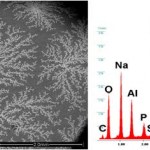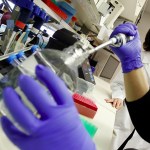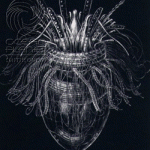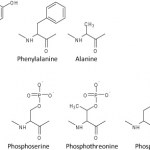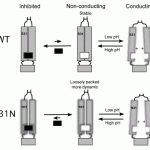basic science
I've frequently written about what I like to refer to as the "toxins gambit" with respect to vaccines. Basically, in the hard core (and even soft core) antivaccine crowd, vaccines are feared as being loaded with all sorts of "toxins," such as aluminum, formaldehyde, mercury, and various chemicals that are dangerous enough separately, but, when combined, "poison" young babies, resulting in their becoming autistic, acquiring asthma and autoimmune diseases, or even dying of sudden infant death syndrome. Of course, many of the scary-sounding chemicals to which antivaccinationists point actually…
I'm a clinician, but I'm actually also a translational scientist. It's not uncommon for those of us in medicine involved in some combination of basic and clinical research to argue about exactly what that means. The idea is translational science is supposed to be the process of "translating" basic science discoveries into the laboratory into medicine, be it in the form of drugs, treatments, surgical procedures, laboratory tests, diagnostic tests, or anything else that physicians use to diagnose and treat human disease. Trying to straddle the two worlds, to turn discoveries in basic science…
I am taking the Memorial Day holiday off. I will return tomorrow. In the meantime, here's a general principle that needs to be remembered in cancer research:
I would also add to that list: So does bleach. So does acid. So does alkali. So does pouring the media out of the dish and letting the cells dry out. So does adding water to dilute the media. So do a variety of lethal poisons. So does heat. So does cold. The list goes on. Add to the list as you see fit!
The point, of course, is that it's very easy to kill cells in a cancer dish. What is difficult is selectively killing cancer cells in…
This is pretty neat: scientists have apparently discovered the first example of truly anaerobic animal life (i.e. an animal that can survive in the absence of oxygen). This isn't some sort of fuzzy critter, though; instead, these are tiny (less than 1 mm in length) animals that were found on the floor of the Mediterranean Sea. The animals belong to the phylum Loricifera (see illustration below). Significantly, these animals lack mitochondria, the sub-cellular organelles where oxygen is employed to produce ATP in aerobic (oxygen-dependent) life.
You can check out the original paper by Danovaro…
Last year, I wrote about a scientific controversy over the structure of the influenza M2 proton channel, particularly over the protein's binding site for adamantane type anti-flu drugs. The Schnell/Chou model, based on solution NMR, had the drug binding to the outside of the channel, within the membrane (at a 4:1 drug:protein ratio). On the other hand, the Stouffer/DeGrado model had the drug binding inside the channel (1:1 ratio), based on X-ray crystallography studies.
A new study was recently published in Nature (the same journal that published the original two competing papers), based this…
When doing science, there's generally one totally optimal way of performing an experiment. But, there may also be several other less optimal means of gathering similar data, and one of those may be much more feasible than the totally optimal method. As a scientist, you have to determine whether this other method is sufficient, or whether it's necessary to expend the extra effort and/or resources on the more difficult method. Sometimes it's totally fine to take the simpler approach (and this will spare some of your precious time and your lab's precious funding), but this post is about a case…
Just as I was in the process of finishing my doctorate in August, I found out that my first first-author paper had been accepted for publication by The EMBO Journal. This was good news, because we were reporting some pretty fundamental findings in a relatively saturated field, and one of our competitors had managed to successfully stall the acceptance of this paper since March. Up until that point, witnessing this happen firsthand had been a somewhat frustrating and disillusioning experience for a young scientist, but I think that we were vindicated in the end. Anyway, this paper--and another…
Late last week, I received emails from two journals (The Journal of Biological Chemistry (JBC) and PLoS ONE) indicating that they are now incorporating interactive 3D images of molecular structures in their papers. The atomic coordinates of all published biomolecular structures have been available for some time at the Protein Data Bank. However, making sense of something as complex as a protein structure can require quite a bit of analysis. So, scientists go through great pains to represent important features of their structures in 2D images for publication. Ostensibly, this new functionality…
The winners of this year's Nobel Prize in Chemistry have been announced, and the prize will be shared equally between Venkatraman Ramakrishnan, Thomas Steitz, and Ada Yonath "for studies of the structure and function of the ribosome." The information encoded in DNA is decoded to produce functional proteins in two stages: transcription (DNA --> RNA) and translation (RNA --> protein). This prize was awarded for the work that described this second stage in atomic detail, and you can read more about it in the scientific background document released with the prize announcement. This prize…
Today, the Nobel Committee announced the winners of the 2009 Nobel Prize in Physiology or Medicine, equally shared between Elizabeth Blackburn of UCSF, Carol Greider of Johns Hopkins, and Jack Szostak of Harvard Medical School--all three American. This year's prize was awarded for the discovery of telomeres, the repeated sequences of DNA at the ends of chromosomes that protect the integrity of the chromosomal DNA, and for the discovery of telomerase, the enzyme that builds the telomeres.
This prize recognizes seminal work in molecular genetics and biology that unlocked some of the basic…
On Wednesday, the CDC reported that influenza A H1N1 viruses from 13 patients with confirmed diagnoses of swine flu had been tested for resistance to a variety of antiviral drugs. The good news was that all of the isolates were susceptible to the antiviral drugs oseltamivir (Tamiflu) and zanamivir (Relenza). However, all 13 were resistant to adamantane-based drugs (amantadine and rimantadine). Resistance to adamantane drugs (which were developed first) has actually become quite widespread among flu viruses in general, so oseltamivir and zanamivir are commonly the drugs of choice.
The…
Through the results of widespread experimentation of the... well... let's say "non-scientific" variety, it's pretty well known that marijuana has the side effect of making the user very hungry. This is one of the many physiological effects of the active ingredient THC (Δ9-tetrahydrocannabinol). More relevantly, however, THC and other cannabinoids are actively being investigated for various useful clinical purposes, including the treatment of cancer through the inhibition of tumor growth.
A new study by Salazar et al. in The Journal of Clinical Investigation demonstrates that THC causes…
Cells in higher organisms exist in a dynamic environment, requiring the ability to alternately grasp and disengage from the three-dimensional web of their surroundings. One family of proteins in particular, the integrins, plays a key role in this process by acting as the hands of the cell. Spanning the cell membrane, they link the extracellular matrix to the cell's internal cytoskeleton. Integrins are especially interesting, though, because the cell uses them to uniquely pass signals in both directions across the membrane, and an integrin's adhesiveness for the extracellular matrix can be…
In our forthcoming book, Unscientific America, Chris and I mention those national surveys where regularly, a large percentage of U.S. citizens fail to correctly answer basic science questions that they supposedly learned in school.
Last Friday, the latest results were released from the most recent quiz by the California Academy of Sciences and Harris Interactive. (See how you do answering test questions here).
From Science Daily:
Despite its importance to economic growth, environmental protection, and global health and energy issues, scientific literacy is currently low among…
Earlier today, the Nobel committee announced that the 2008 Nobel Prize in Chemistry has been awarded to Osamu Shimomura, Martin Chalfie, and Roger Y. Tsien "for the discovery and development of the green fluorescent protein, GFP." There's much to be said for how useful a tool GFP has been in cellular biology, but Alex Palazzo has already covered it at The Daily Transcript, so go check out his post for more.
The winners of the 2008 Nobel Prize in Physiology or Medicine have been announced, and the prize has been awarded for early discoveries that have subsequently led to vaccines or treatments of two widespread virus-caused diseases. Half of the prize was awarded to Harald zur Hausen "for his discovery of human papilloma viruses causing cervical cancer" and one-fourth each was awarded to Francoise Barre-Sinoussi and Luc Montagnier "for their discovery of human immunodeficiency virus." For more, check out the official press release or the more detailed description of the prize-winning…
If so, you should check out EcoliWiki, which you might find a useful resource, and you might even find yourself compelled to contribute some of your knowledge to it.
Since I'm already blogging about E. coli today, I thought I would also bring up an interesting project I found out about earlier this week. I'm currently wrapping up a short visit to my alma mater, Texas A&M University, and while there, I've met up with two local science bloggers that I know of: Matt Springer of Built on Facts (a fellow blogger here on ScienceBlogs.com) and Jim Hu of Blogs for Industry. Hu is an associate…
Microcosm: E. Coli and the New Science of Life
by Carl Zimmer
Pantheon: 2008, 256 pages.
Buy now! (Amazon)
I come face-to-face with Escherichia coli every day. In a sense, we all do--as billions of E. coli inhabit every individual's intestines. But for me, E. coli is a protein factory. I'm a structural biologist, and my work depends on being able to produce large amounts of specific proteins--generally proteins found in humans or mice. However, purifying large amounts of these proteins from humans or mice would be virtually impossible, and manipulating these proteins in the manner I…
Below is the second part of my interview with planetary geologist Bethany Ehlmann. In the first part, she discussed two of her recent papers on Martian geology (see citations below). In this segment, she discusses water on Mars more generally.
Bethany Ehlmann Nick Anthis: Would it be possible to briefly take our readers through the history of the discovery of water (or traces of past water) on Mars? I know that this is an important area, but it seems like there's so much work on it coming out now that it's hard for someone not in the field to put it all into context. Maybe you could just…
Planetary geology is a fascinating area--particularly when it pertains to the search for extraterrestrial life. I wrote about it once during my brief stint as a student science writer, but it's not an area that I've really covered on my blog. However, a former colleague of mine from Oxford, Bethany Ehlmann, was recently involved with a couple of papers on geological formations left by ancient Martian water, so I thought that this would be a perfect opportunity. Ehlmann is currently a PhD student in the geological sciences at Brown University and part of the CRISM (Compact Reconnaissance…
